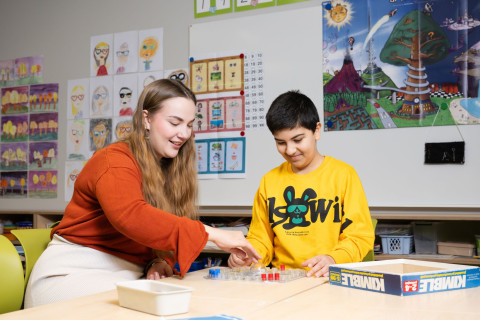Pupils are often routinely guided to attend the Finnish as a second language and literature syllabus (S2) in Finland based on their mother tongue recorded in the Population Information System or language proficiency level assessed by the school, whereas under the Basic Education Act, the child’s guardian has the right to decide about choosing S2 syllabus. Additionally, it appears that an 'S2 status' is easily attributed to a pupil whose mother tongue is different from the school's language of instruction.
This is one of the findings of a study led by Professor Jenni Alisaari that looked at national survey data to determine how pupils are directed to study S2. The researchers also examined the connection of such factors as the backgrounds of the teachers who responded to the survey, the size of the municipality in which they work, and teachers' work experience and other characteristics with the ways pupils are guided to this syllabus.
“Our findings indicate that many types of factors and inconsistent practices underlie the way pupils are guided to study the S2 syllabus. While many teachers handle the guidance to a very high standard, not everyone appears to have sufficient knowledge of the fact that it is up to the guardians to select the syllabus in mother tongue and literature," Alisaari explains.
A pupil may study the Finnish as a second language and literature syllabus if their mother tongue is not Finnish, Swedish or Sámi. The aim of S2 instruction is to help the pupil achieve sufficient Finnish language proficiency for studying.
Language use and teaching are always part of a broader social and political context
According to Alisaari, the findings of the study confirm that the topic should be examined critically. More national guidance, consistent practices and operating models are needed both for guiding pupils to the S2 syllabus and cooperation with guardians. The flow of information should also be improved.
"This is important in order to guarantee that all pupils have appropriate opportunities to participate in school activities as full members of its community."
Studies and reports on pupils at basic education age have found that while the Finnish or Swedish proficiency levels of pupils with an immigrant background vary considerably, pupils who study Finnish or Swedish as a second language have a clearly lower competence level than others in assignments that measure proficiency in Finnish language and literature.
At the end of basic education, many pupils who have studied the S2 syllabus do not have adequate language proficiency for studying optimally at upper secondary education level. On the other hand, pupils whose competence level exceeds the national average in Finnish language proficiency, also compared to the mainstream population, are held back in S2 instruction.
Alisaari points out that language use and teaching are always part of a wider social and political context.
"In the daily life of the school, the division between these two syllabi often results in reflection and conflicts. Our findings consequently support the idea that the practices should be changed."
Alisaari and her research group are currently working on language assessment practices. This will provide a better understanding of how language proficiency is assessed and to what extent there are dissimilarities in the assessment between different schools and municipalities.



